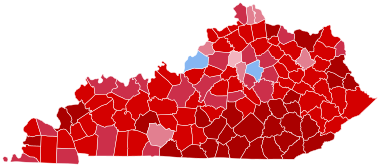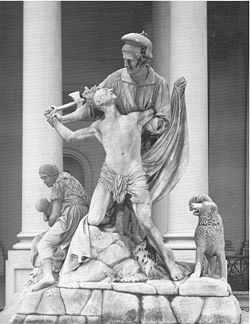It’s August. Houston is ending its second month of record heat with no rain. This morning when I walked the dogs at 6:30 it was 80°, and the high today is projected to be 101°. That’s cooler than yesterday. After the freezes of the last two years the joke is that post-global warming there are two seasons in Houston, Hell and when Hell freezes over.
This morning in Indiana it was 57°. There’s no rain there, either, but the high in Indiana today will only be 91°. That’s a perfectly reasonable August day. We’re going to Indiana to enjoy beautiful summer weather.
Yesterday at a dinner I sat across from a psychoanalyst who grew up in Indiana. She left in 1974, which she said was the height of Indiana’s Rust Belt economic failure. Indiana, Ohio, Michigan, Pennsylvania, upstate New York, West Virginia . . . That must be the year we started buying Japanese cars, outsourcing carburetors to Mexico, and importing computer chips from China. Ok, maybe the computer chips came later. Indiana’s economy was either manufacturing or farming, and since its peak in the 1950s, American manufacturing in the Rust Belt had declined into collapse. She said that still, it was a wonderful place to grow up, and that where we were going, near Crawfordsville, is lovely. She also said she couldn’t have done what she does in Indiana. I suppose that in the Rust Belt years there wasn’t money for fripperies like mental health.

U.S. Expansion 1790, Perry Castaneda Map Collection, University of Texas.
I think we erred when we stopped calling Ohio and Indiana the Old Northwest. Now it’s the Midwest, lumped together with Kansas and Nebraska, but historically the Old Northwest was the heart of the first westward expansion of the brand new United States, and it’s where we abandoned any pretense of Native American assimilation. That bit of our history deserves pondering, but until now I never have. Indiana Indians refused to transform into European farmers, and even if they’d tried we probably wouldn’t have let them. We certainly didn’t put up with that sort of nonsense with the South’s civilized tribes.
By 1816, when Indiana became the 19th state, there was no remaining Native American opposition to European settlement. Indiana had gone from the 1810 formation of the Tecumsah Federation to unopposed European settlement in six years. Death and removal had become the tools of American expansion, and would remain so.

Kurz & Allison, Battle of Tippecanoe, 1889, Library of Congress, https://loc.gov/pictures/resource/pga.01891/.
William Henry Harrison, the future short-lived President, was appointed Indiana territorial governor in 1801. He was a well-to-do Virginia boy–he was still in his early 20s–and he had two goals; to open the territory for expansion, which he did, and to claim the territory for slavery, which he didn’t.
He failed to expand slavery for the most unexpected of reasons: white Southern settlers. When Indiana’s first constitution was written, the majority of Indiana settlers were Southerners from slave states, Kentucky, Virginia, North Carolina, but they were poor Southerners from slave states, not William Henry Harrison’s slave-owning aristocracy. When they adopted their new statehood constitution, they prohibited slavery. It may have been the right thing to do, but their motive wasn’t humanitarian. They didn’t want to compete with Southern slave owners for land.
They didn’t want to compete with African Americans either. Indiana’s 1851 constitution prohibited black immigrants, and imposed registration requirements for existing black inhabitants.
The Lincoln family was part of the migration of poor Southerners from Kentucky to Indiana, until they finally moved on to Illinois when Abraham was 21. Indiana missed a bet when it let young Honest Abe leave.


St. Mémin, Charles Balthazaqr Julien Fevret de, 1800, William Henry Harrison, 9th President of the United States, engraving, Library of Congress; Tecumseh, between 1860 and 1900, wood engraving, Library of Congress.
Notwithstanding Lincoln, Indiana has a reputation for conservative politics, and its current politics certainly are. It’s the state that gave us Mike Pence, former vice president and before that the Indiana governor. Poor Pence. He is so hated as a sycophantic toady on the left and as a craven coward on the right that he doesn’t get the credit he deserves for stepping up on January 6. Me? I will always be thankful for Pence, though I wouldn’t vote for him. I suspect that history will be kinder to Mike Pence than we are, at least if the nation survives the next score years.
In 2016, Donald Trump carried Indiana by 56.9% to 37.8% for Hillary Clinton, with 2,734,958 total votes. The Libertarian, Gary Johnson, received 5% of the vote. Four years later Trump carried 57.02% of the vote and Biden 40.96%, with 3,033,118 total votes. The Libertarian, Jo Jorgenson, dropped to 1.95%. It probably should be noted that Trump’s numbers might have been inflated by having native-son Pence as a running mate, but I suspect that in Indiana Trump would have walked away with the elections anyway. Democrats won in areas you’d expect, urban Indianapolis and the college town of Bloomington. Then there are the somewhat unexpected old industrial counties, Lake and St. Joseph in the far northwest, but unexpected to me because I know very little of Indiana. Finally there’s Tippecanoe County, with a population of 186,251. It voted for Trump in 2016, but switched to Biden in 2020. It is the home of Purdue University, and maybe that explains it, though switched majorities are always interesting.

Indiana 2020 election results by county, Wikipedia.
Barrack Obama did squeak by with a win in Indiana in 2008, 50% to 48.9%, but he didn’t repeat in 2012 when he dropped a full 6%. All of the statewide officials in Indiana are Republican, as are both senators and seven of the nine members of Congress. In the state assembly, 40 of the 50 senators and 70 of the 100 representatives are Republican. I reckon Indiana deserves its conservative reputation.
Geographically, in the north Indiana is bordered by Lake Michigan and Michigan, in the east by Ohio, in the south by Kentucky, and in the west by Illinois. The Ohio River separates Indiana and Kentucky, and the Wabash River flows along the lower third of the Illinois-Indiana border–the part where the border is squiggly. It is the 38th state by size, between Virginia and Maine, with 35,870 square miles, but it’s 17th by population with 6,833,037 people as of 2022. Massachusetts is 16th.
Northern and central Indiana were glaciated and tend to be flat to rolling. There’s corn in them there rolls. Corn and soybeans make up about 60% of Indiana’s agriculture production. Unglaciated southern Indiana is apparently more varied, with sedimentary deposits of limestone, shale, sandstone, and dolomite, some of which apparently protrude as bluffs and whatnot. Coal mining in the south is located north across the Ohio River from Kentucky’s northwestern coal region. “Paradise” is on the Green River in Kentucky, not the Wabash, and “Coal Miner’s Daughter” set in Indiana just ain’t quite the thing.

Current Indiana coal permits. The blue circles are surface mines, the purple squares are underground, and the yellow stars are processing facilities. I think. Indiana Department of Natural Resources.
With all that sedimentary rock in south Indiana filtering water, farms growing corn, and proximity to Kentucky, Indiana ought to be an excellent location for bourbon, and apparently there’s excellent bourbon made in southern Indiana. In the interest of science I’ll go out of my way to try some.
In addition to corn and good water, Indiana has a ready supply of white people. Indiana is 77% Anglo, with less than 10% of the population African American, less than 8% Hispanic, and 3% Asian. Indianapolis, the state’s largest city with about 900,000 people, is 88% Anglo. Only in the northwestern industrial corner closest to Chicago are there sizable African American or Hispanic populations, in Lake County 18.9% and 17.7%, respectively.
There are two reasons to go to Indiana to fish. This gets complicated, but in the Newer Northwest, Oregon, Washington, and Northern California, they haven’t quite managed to kill off all their steelhead, and there is still a steelhead fishery there, some of it wild. When we fished in Washington and Oregon, we fished for steelhead, though we only caught a total of one. Steelhead are rainbow trout that join the navy and go to sea, then return to their natal rivers to spawn. Genetically they are exactly like the rainbow trout that never leave the western rivers. Behaviorally they are much closer to Pacific salmon. Feeding in the Pacific they grow large enough to rival some of the Pacific salmon as well.

Sage, Dean, Townsend, C.H., Smith, H.M., Harris, William C., Great Lake Trout, 1924, Salmon and Trout 351, MacMillan Company, New York, New York, Freshwater and Marine Image Bank, University of Washington. The scientific name is now Salvelinus namaycush.
Meanwhile the Great Lakes were once populated with lake trout, a close cousin of brook trout. Lake trout are the largest of the chars, and are native to the northern US and Canada. I don’t think they were ever particularly popular with fly fishers–they live deep in big waters, plus they are invasive in places like Yellowstone–but in the Great Lakes they were once a popular gamefish for gear fishers and an important commercial fishery. Then they were effectively wiped out of the Great Lakes by pollution, overfishing, and invasive sea lampreys after the Welland Canal connected the Lakes to the Atlantic. I could have bad dreams about invasive sea lampreys.
To replace the lake trout fishery, the Old Northwest settled on stocking New Northwest steelhead. Now in Ohio, Pennsylvania, Indiana, and Upstate New York–Steelhead Alley–fly fishing in the dead of winter for steelhead migrating into rivers from the Great Lakes is a thing. In my mind it’s a strange, cold thing, but still a thing. To steelhead anglers in Washington, Oregon, and Northern California, the notion that fishing for a stocked freshwater lake fish and calling it steelhead is anathema. It really is quite the etymological dispute.
We are not going to fish for Great Lakes steelhead, or whatever it is they’re called that doesn’t make somebody angry. We are going to fish for smallmouth bass, which are native to Indiana. I’m told that Indiana is the very place for smallmouth bass, mostly by the State of Indiana. I am also told, mostly by the State of Indiana, that the particular place we’re going, Sugar Creek, is among the very best places for Indiana smallmouth. I hope the State of Indiana is at least as honest as its two famously honest sons, Abe Lincoln and Mike Pence.

































